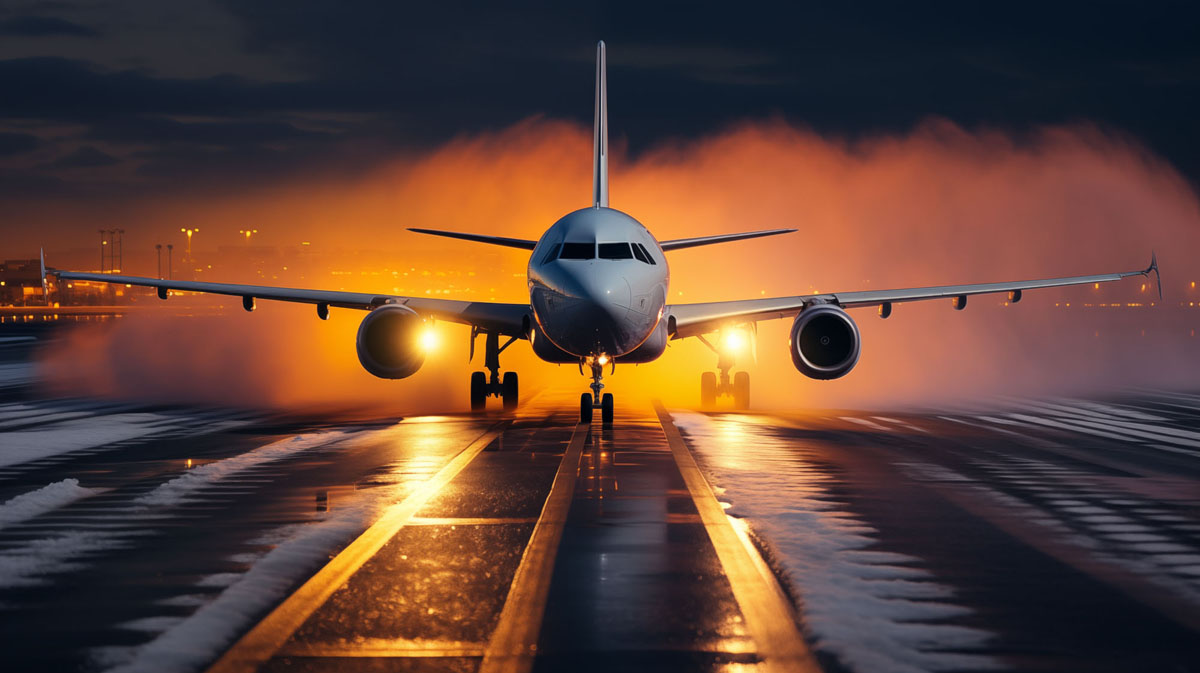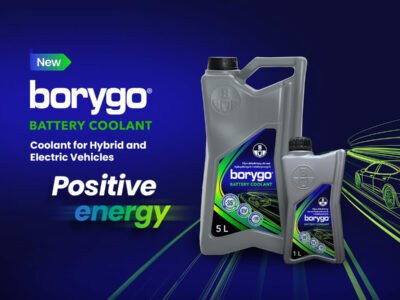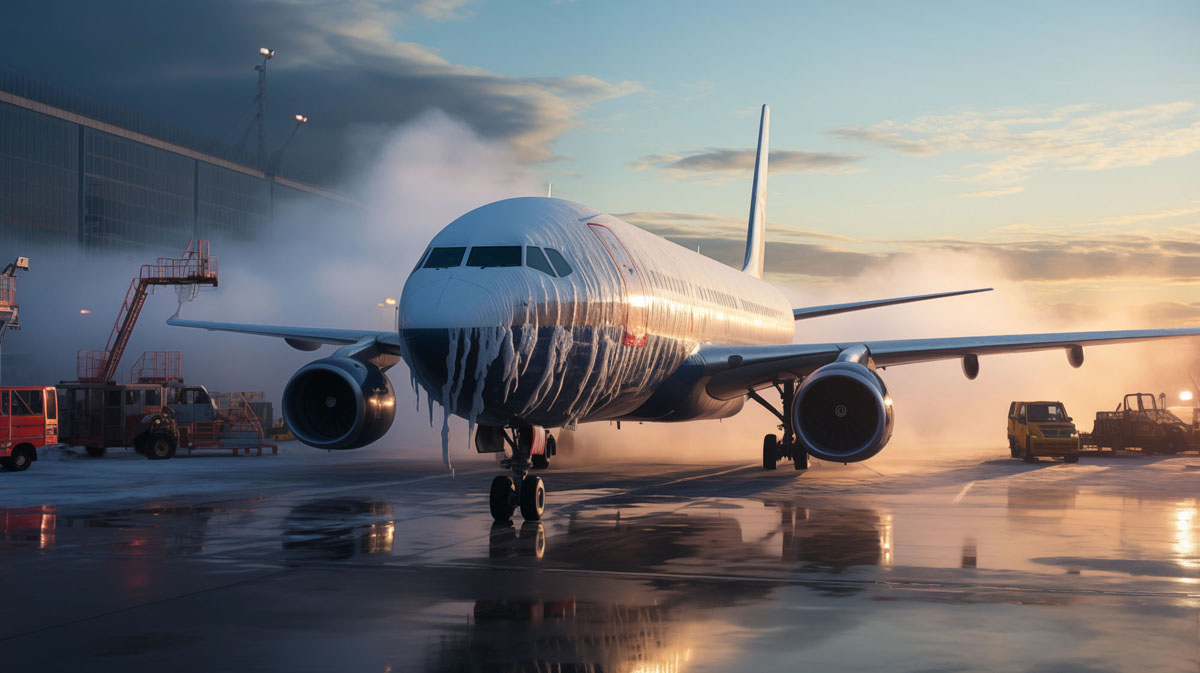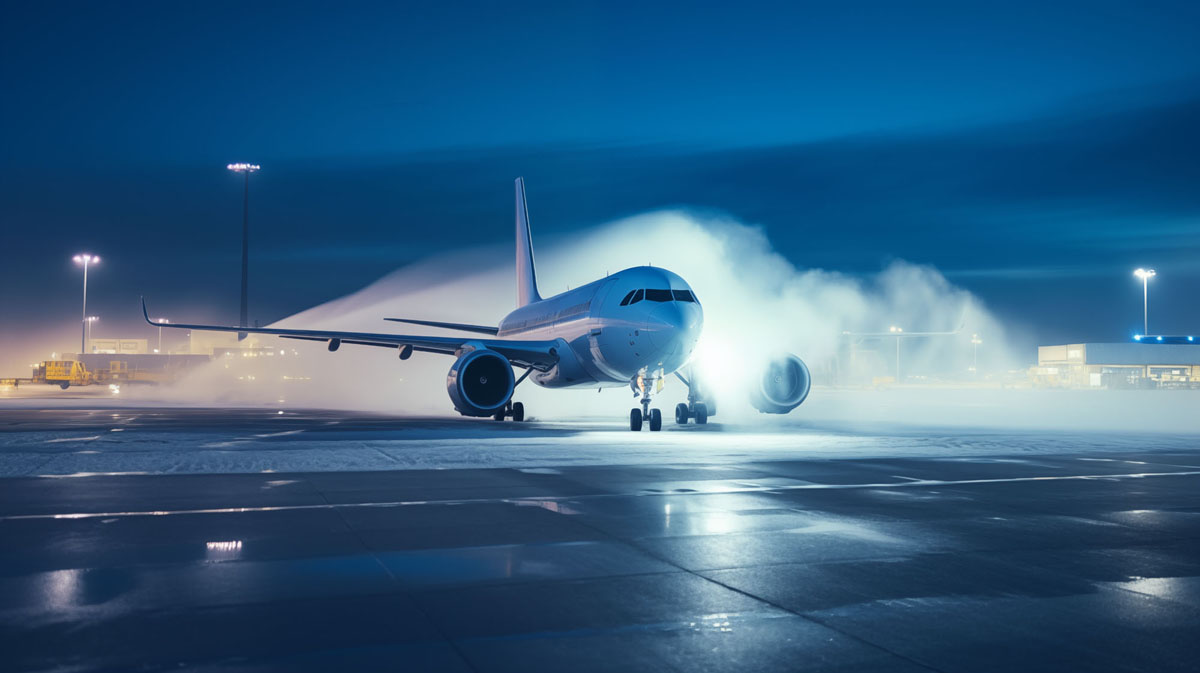What is aircraft deicing?
Sunday 03.11.2024
Aircraft deicing is one of the most crucial processes in the aviation industry, which aims to ensure the safety of passengers and crew. Winter is a period when icing becomes a serious threat to aviation. Aircraft taking off and landing in difficult weather conditions are exposed to ice buildup on their surfaces, which can negatively impact aerodynamics, and thus the ability of the machine to fly. Are you wondering what aircraft deicing involves, how the deicing procedure looks, and how this process works in modern aircraft? We answer!

What is aircraft deicing? We explain!
Aircraft deicing is the process of removing ice, snow, and frost from key surfaces of the machine – primarily wings, stabilizers, fuselage, and propellers. The ice cover alters the aerodynamic shape of the aircraft, increasing its drag and decreasing lift, which can lead to catastrophic results. How are aircraft deiced in practice? This process is precisely controlled and monitored to ensure full effectiveness and protect machines from further icing.
Deicing is most commonly done using special fluids with specific chemical properties. Such agents are safe for aircraft surfaces and do not cause corrosion or mechanical damage.
Aircraft Deicing Procedure – How Does It Look?
The aircraft deicing procedure consists of several key stages. Each step is carefully planned to minimize aircraft downtime while ensuring full effectiveness. Here’s how the process looks step-by-step:
Situation Assessment
Before each takeoff in challenging winter conditions, ground personnel thoroughly assess the degree of aircraft icing. The thickness and type of deposits – whether it’s snow, ice, or frost – are evaluated. Based on this analysis, the appropriate deicing method and amount of deicing fluid are selected.
Application of Deicing Fluid
After assessment, the deicing process begins. The most commonly used agents are specialized glycol-based fluids, which are applied to the aircraft surface using special vehicles equipped with arms and nozzles. These fluids not only dissolve ice but also prevent its reformation in a short period. It’s worth mentioning products available on the market, such as aircraft deicing fluid, specifically designed for the aviation industry and characterized by high efficiency.
Effectiveness Check
After applying the deicing fluid, aircraft surfaces are thoroughly inspected to ensure that the ice has been completely removed. Every millimeter of ice residue could pose a risk during takeoff, which is why the inspection is extremely meticulous.
Prevention of Further Icing
The final stage involves applying a second type of fluid – an anti-icing agent that aims to prevent ice formation during aircraft taxiing and just after takeoff. This specialized product creates a protective layer on the aircraft’s surface, lasting for a specified period.

How Does Deicing Work on Aircraft During Flight?
Modern aircraft are equipped with advanced systems that allow for automatic deicing during flight. One of these is the thermal system, which heats critical components, such as wings, stabilizers, and air inlets, to prevent ice buildup. This is achieved by transferring heat generated by the engines to surfaces exposed to icing.
Another solution includes mechanical deicing systems, which use vibrations or special mechanical covers to break up ice on aerodynamic surfaces. These systems operate automatically at designated altitudes and in specific weather conditions.
Why Is Aircraft Deicing So Important?
Icing is one of the biggest threats to flight safety. Even a small amount of ice on the wings can significantly impact lift, leading to reduced stability and control of the aircraft. The deicing process ensures that the aircraft can take off safely and has full aerodynamic control during the initial minutes of flight when atmospheric conditions are the most challenging.
Products for the Aviation Sector – Boryszew ERG
If you’re looking for reliable and certified deicing agents, it’s worth checking out the offer from Boryszew ERG. As a producer of automotive fluids and industrial chemicals, we also supply high-quality products for the aviation sector. In our range, you will find modern aircraft deicing fluids that ensure efficiency and safety.
Summary
Aircraft deicing is a critical process for flight safety, especially in challenging weather conditions. Thanks to modern technologies and high-quality deicing agents, such as those offered by Boryszew ERG, the risks associated with icing can be minimized, ensuring safety for passengers and crew. Regular deicing procedures and the use of appropriate chemical agents guarantee that aircraft can take off and land safely, regardless of weather conditions.

Friday 18.04.2025
Happy Easter 2025
Happy Easter May this special time bring peace, spring energy and smiles among your loved […]
Read More… from Happy Easter 2025
Read more
Friday 20.12.2024
Merry Christmas and a Happy New Year!
Merry Christmas and a Happy New Year! May this magical time fill your hearts with […]
Read More… from Merry Christmas and a Happy New Year!
Read more
Thursday 07.11.2024
New Generation of Coolant for Hybrid and Electric Vehicles
Borygo® Battery Coolant – a coolant developed specifically for hybrid and electric vehicles. It provides anti-corrosion protection, features low electrical conductivity, and meets ASTM D8485 standards. Perfect for battery cooling systems. […]
Read More… from New Generation of Coolant for Hybrid and Electric Vehicles
Read more
